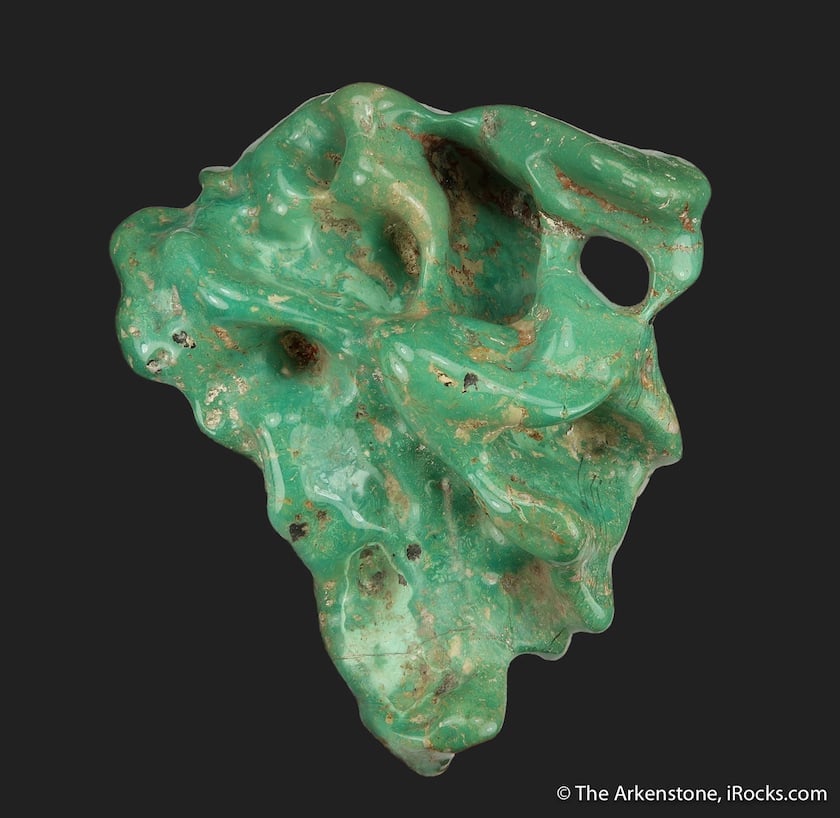How Do Turquoises Form?
Turquoise gems can show many beautiful variations. Learn how turquoises form and how geology affects their color, shape, and durability.
6 Minute Read
What is Turquoise?
Unlike popular transparent gemstones like diamond and aquamarine, gem-quality turquoise doesn’t form as a single solid crystal. Instead, turquoise is a porous mineral aggregate known as a cryptocrystalline rock, comprised of many tiny individual micro-crystals. Chemically, turquoise is a hydrated copper and aluminum phosphate with the formula CuAl6(PO4)4 (OH)8 · 5H2O. Depending on the growth environment, its chemical structure may also contain iron, zinc, and other impurities.
Turquoises form via a sedimentary process at the Earth’s surface. Scientists classify turquoise as a secondary mineral since it consists of transformed primary materials cemented into solid stone. In contrast, gemstones like diamond and aquamarine require immense heat and pressure deep in the Earth to crystallize.
Where Do Turquoises Form?
First and foremost a desert gem, turquoise requires a relatively
…Emily Frontiere
Emily Frontiere is a GIA Graduate Gemologist. She is particularly experienced working with estate/antique jewelry.
International Gem Society
Related Articles
Turquoise Value, Price, and Jewelry Information
Turquoise Color and the Color Turquoise
Turquoise Treatments and Synthetics Guide
Turquoise Symbolism
Latest Articles
800 Years of Mogok: A Celebration in Tenuous Times
What is the Average Gemstone Faceting Yield?
Pyroxmangite Value, Price, and Jewelry Information
How to Identify Emerald Simulants and Synthetics
Never Stop Learning
When you join the IGS community, you get trusted diamond & gemstone information when you need it.
Get Gemology Insights
Get started with the International Gem Society’s free guide to gemstone identification. Join our weekly newsletter & get a free copy of the Gem ID Checklist!
